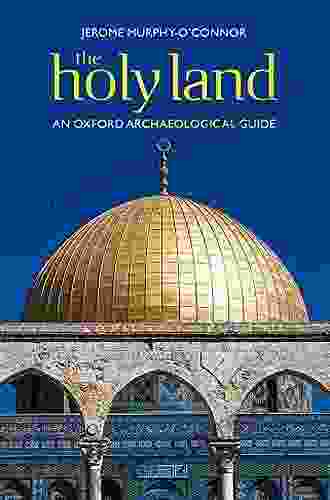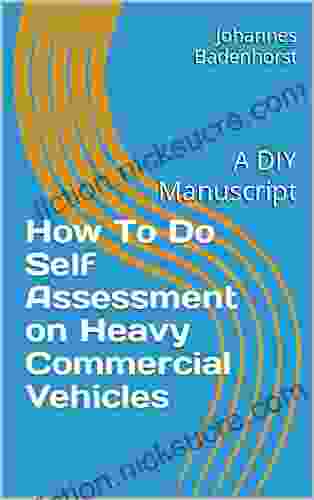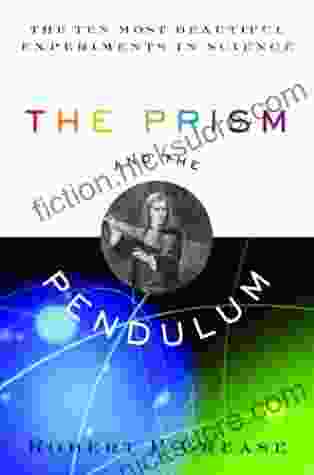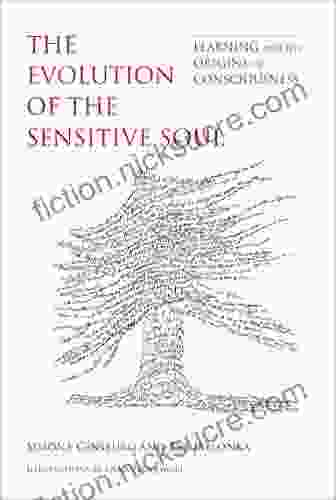An Oxford Archaeological Guide: From Earliest Times to 1700 Oxford

Oxford is a city with a rich and varied archaeological history. The area has been inhabited for thousands of years, and there is evidence of human activity from the earliest times. In this guide, we will take a journey through Oxford's archaeological past, from the earliest evidence of human habitation to the end of the 17th century.
4.7 out of 5
| Language | : | English |
| File size | : | 13180 KB |
| Text-to-Speech | : | Enabled |
| Screen Reader | : | Supported |
| Enhanced typesetting | : | Enabled |
| Word Wise | : | Enabled |
| Print length | : | 576 pages |
| Lending | : | Enabled |
The Earliest Times
The earliest evidence of human habitation in the Oxford area dates back to the Mesolithic period, around 10,000 BC. These early settlers were hunter-gatherers who lived in small groups and moved around the landscape in search of food. They left behind a number of artifacts, including flints, arrowheads, and pottery.
During the Neolithic period, around 4000 BC, people in the Oxford area began to settle down in permanent villages and practice agriculture. They built houses, grew crops, and raised livestock. They also began to make pottery and other objects of art.
The Bronze Age, which began around 2000 BC, saw the of new technologies, such as metalworking and weaving. People in the Oxford area began to build larger and more elaborate houses, and they also began to make jewelry and other objects of luxury.
The Iron Age, which began around 800 BC, was a time of great change in the Oxford area. The population grew rapidly, and new settlements were founded. People began to build hillforts, which were large, fortified enclosures that provided protection from attack.
The Roman Period
The Roman conquest of Britain in 43 AD had a profound impact on the Oxford area. The Romans built a fort at the confluence of the River Thames and the River Cherwell, and they also established a civilian settlement nearby. The Roman town of Oxonia grew rapidly, and it soon became a major center of trade and government.
The Romans left behind a number of important archaeological remains, including the city walls, the Roman baths, and the amphitheater. These remains provide a glimpse into the life of Roman Oxford, and they help us to understand the role that the city played in the Roman Empire.
The Anglo-Saxon Period
The Anglo-Saxon period, which began in the 5th century AD, saw the arrival of new settlers from northern Europe. The Anglo-Saxons established a number of new settlements in the Oxford area, and they also converted the local population to Christianity.
The Anglo-Saxons left behind a number of important archaeological remains, including churches, monasteries, and cemeteries. These remains provide a glimpse into the life of Anglo-Saxon Oxford, and they help us to understand the role that the city played in the Anglo-Saxon kingdom of Wessex.
The Norman Conquest
The Norman Conquest of England in 1066 had a significant impact on Oxford. The Normans built a new castle on the site of the Roman fort, and they also founded a new university, which later became the University of Oxford.
The Normans left behind a number of important archaeological remains, including the castle, the university buildings, and the churches of St. Peter-in-the-East and St. Mary the Virgin. These remains provide a glimpse into the life of Norman Oxford, and they help us to understand the role that the city played in the Norman kingdom of England.
The Medieval Period
The medieval period, which lasted from the 11th to the 15th centuries, was a time of great change in Oxford. The city grew rapidly, and new buildings were constructed, including colleges, churches, and hospitals. Oxford also became a major center of learning, and it was home to some of the greatest scholars of the Middle Ages.
The medieval period left behind a number of important archaeological remains, including the colleges, the churches, and the hospitals. These remains provide a glimpse into the life of medieval Oxford, and they help us to understand the role that the city played in the medieval world.
The Tudor Period
The Tudor period, which lasted from the 15th to the 17th centuries, was a time of great religious and political upheaval in England. Oxford was a major center of the Reformation, and it was home to some of the most important figures in the English Reformation, including Thomas More and John Wycliffe.
The Tudor period left behind a number of important archaeological remains, including the Bodleian Library, the Radcliffe Camera, and the Sheldonian Theatre. These remains provide a glimpse into the life of Tudor Oxford, and they help us to understand the role that the city played in the Tudor kingdom of England.
The Stuart Period
The Stuart period, which lasted from the 17th to the 18th centuries, was a time of great intellectual and artistic achievement in Oxford. The city was home to some of the greatest poets and writers of the English language, including John Milton and Alexander Pope. Oxford also became a major center of scientific research, and it was home to some of the most important scientists of the age, including Sir Isaac Newton and Robert Boyle.
The Stuart period left behind a number of important archaeological remains, including the Ashmolean Museum, the Clarendon Building, and the Sheldonian Theatre. These remains provide a glimpse into the life of Stuart Oxford, and they help us to understand the role that the city played in the Stuart kingdom of England.
Oxford has a rich and varied archaeological history. The city has been inhabited for thousands of years, and there is evidence of human activity from the earliest times. In this guide, we have taken a journey through Oxford's archaeological past, from the earliest evidence of human habitation to the end of the 17th century. We have seen how Oxford has changed over time, and we have learned about the different people who have lived in the city. Oxford's archaeological heritage is a valuable asset, and it is something that we should all be proud of.
4.7 out of 5
| Language | : | English |
| File size | : | 13180 KB |
| Text-to-Speech | : | Enabled |
| Screen Reader | : | Supported |
| Enhanced typesetting | : | Enabled |
| Word Wise | : | Enabled |
| Print length | : | 576 pages |
| Lending | : | Enabled |
Do you want to contribute by writing guest posts on this blog?
Please contact us and send us a resume of previous articles that you have written.
 Fiction
Fiction Non Fiction
Non Fiction Romance
Romance Mystery
Mystery Thriller
Thriller SciFi
SciFi Fantasy
Fantasy Horror
Horror Biography
Biography Selfhelp
Selfhelp Business
Business History
History Classics
Classics Poetry
Poetry Childrens
Childrens Young Adult
Young Adult Educational
Educational Cooking
Cooking Travel
Travel Lifestyle
Lifestyle Spirituality
Spirituality Health
Health Fitness
Fitness Technology
Technology Science
Science Arts
Arts Crafts
Crafts DIY
DIY Gardening
Gardening Petcare
Petcare Ben Greenfield
Ben Greenfield Haruki Murakami
Haruki Murakami Sarah Krasnostein
Sarah Krasnostein Tom Mchale
Tom Mchale Mark Chang
Mark Chang Caitlyn Dare
Caitlyn Dare Mary O Kane
Mary O Kane Joseph Lumpkin
Joseph Lumpkin Leon Pantenburg
Leon Pantenburg Print Replica Kindle Edition
Print Replica Kindle Edition Ben Stoeger
Ben Stoeger Garth Nix
Garth Nix Roald Amundsen
Roald Amundsen Barbara Ehrenreich
Barbara Ehrenreich Sterling Test Prep
Sterling Test Prep Elizabeth Harmon
Elizabeth Harmon David D Burns
David D Burns Dorothee Haering
Dorothee Haering Randall Bell
Randall Bell Ian Ball
Ian Ball Carl Zimmer
Carl Zimmer Doug Cook
Doug Cook Michael Geers
Michael Geers Jane Mersky Leder
Jane Mersky Leder Victor J Strecher
Victor J Strecher Karl Polanyi
Karl Polanyi Dan Branagan
Dan Branagan Jim Al Khalili
Jim Al Khalili Nadine Hays Pisani
Nadine Hays Pisani Orly Katz
Orly Katz Julia Albu
Julia Albu Lidia Stanton
Lidia Stanton Michelle Maccarthy
Michelle Maccarthy Peter Vermeulen
Peter Vermeulen Greg Vaughn
Greg Vaughn Clive Webb
Clive Webb Sylvia Hood Washington
Sylvia Hood Washington Jed Jurchenko
Jed Jurchenko Alfred S Posamentier
Alfred S Posamentier Michael Pewtherer
Michael Pewtherer Peterson S
Peterson S Heather Smith Thomas
Heather Smith Thomas Laura Michaud
Laura Michaud Russell King
Russell King Rob Reaser
Rob Reaser Hillary Davis
Hillary Davis Olszewski Marie Erin
Olszewski Marie Erin Jacqueline Melvin
Jacqueline Melvin Jack Lagan
Jack Lagan Kamran Nazeer
Kamran Nazeer Nina Manning
Nina Manning Daniel S Milo
Daniel S Milo Gerald Hirigoyen
Gerald Hirigoyen Paul Bellow
Paul Bellow Nathan Fox
Nathan Fox Diane Ackerman
Diane Ackerman Grant Cunningham
Grant Cunningham Ken Johnson
Ken Johnson Robb Manning
Robb Manning Doug Howlett
Doug Howlett Julietta Suzuki
Julietta Suzuki Michael Martin
Michael Martin John Rousmaniere
John Rousmaniere Kindle Edition
Kindle Edition Ruby Hamad
Ruby Hamad Michael Edelson
Michael Edelson Dave Bergman
Dave Bergman Anna Rashbrook
Anna Rashbrook Michael Conway
Michael Conway Harry K Mcevoy
Harry K Mcevoy Carlo Zen
Carlo Zen Mindy Cockeram
Mindy Cockeram Mike Carter
Mike Carter Sir Isaac Newton
Sir Isaac Newton John D Kelleher
John D Kelleher Eric Butterworth
Eric Butterworth Kimberly Nix Berens Phd
Kimberly Nix Berens Phd Robert A Sadowski
Robert A Sadowski Suellen Ocean
Suellen Ocean Dennis L Thombs
Dennis L Thombs Alan Agresti
Alan Agresti Stanislav Grof
Stanislav Grof John Balzar
John Balzar Jacob Copeman
Jacob Copeman Jack Harris
Jack Harris Michael Bamberger
Michael Bamberger Christine M Benton
Christine M Benton Guy Fieri
Guy Fieri Yves Pochet
Yves Pochet Pam Coburn
Pam Coburn Chris Sajnog
Chris Sajnog Carolyn P Henly
Carolyn P Henly Jon Haws
Jon Haws John Gray
John Gray Jenny Han
Jenny Han Keith H Basso
Keith H Basso Robert L Park
Robert L Park Bob Palmer
Bob Palmer Donald Fenna
Donald Fenna P J Hatton
P J Hatton Jamie Della
Jamie Della Martise Moore
Martise Moore Dk
Dk Theodore Brun
Theodore Brun David Levithan
David Levithan Teresa Marrone
Teresa Marrone Mitch Benjamin
Mitch Benjamin Jonathan Gelber M D M S
Jonathan Gelber M D M S Laura Pavlov
Laura Pavlov Mark Mazower
Mark Mazower Patti Feuereisen
Patti Feuereisen Ryan Burden
Ryan Burden Misty Griffin
Misty Griffin Steve Sleight
Steve Sleight Marcia Scheiner
Marcia Scheiner Stephanie Wood
Stephanie Wood John Allyn
John Allyn Julia Scheeres
Julia Scheeres Patty Hahne
Patty Hahne Massad Ayoob
Massad Ayoob Toyo Kobayashi
Toyo Kobayashi James Felton
James Felton Patricia A Jennings
Patricia A Jennings Janet Sasson Edgette
Janet Sasson Edgette Stephanie Greer
Stephanie Greer Richard Barrett
Richard Barrett Stef Maruch
Stef Maruch Jane Sanders
Jane Sanders Ron Kaplan
Ron Kaplan Glenn Whitman
Glenn Whitman Patrick Sweeney
Patrick Sweeney John H Falk
John H Falk J M Hofer
J M Hofer Talise Xavier
Talise Xavier Mike Kephart
Mike Kephart Kathy Malloch
Kathy Malloch Betsy Childs Howard
Betsy Childs Howard Kay Burningham
Kay Burningham Mary Blewitt
Mary Blewitt Malinda Lo
Malinda Lo Shankar Vedantam
Shankar Vedantam Dr Ron M Horner
Dr Ron M Horner Elizabeth Baquedano
Elizabeth Baquedano Dante Fortson
Dante Fortson Mike Stallard
Mike Stallard Ivar Dedekam
Ivar Dedekam Rohan Agarwal
Rohan Agarwal Veronica Roth
Veronica Roth F Brent Neal
F Brent Neal Jillian Dodd
Jillian Dodd Beverly Bell
Beverly Bell Peter Fretwell
Peter Fretwell William Martin
William Martin Jess Mahler
Jess Mahler Susan Campbell Bartoletti
Susan Campbell Bartoletti Peter Gandy
Peter Gandy Petr Beckmann
Petr Beckmann Scott Davis Howard
Scott Davis Howard Lawrence Goldstone
Lawrence Goldstone Kathryn Allen Rabuzzi
Kathryn Allen Rabuzzi Craig Chappelow
Craig Chappelow David Farrier
David Farrier Mike Schultz
Mike Schultz David M Killoran
David M Killoran David Kaiser
David Kaiser Neil Peart
Neil Peart Eileen Bailey
Eileen Bailey Edward Dolnick
Edward Dolnick Vincent Chidindu Asogwa
Vincent Chidindu Asogwa Jane Nelsen
Jane Nelsen Randy Vance
Randy Vance Karla Marie Williams
Karla Marie Williams Kate Middleton
Kate Middleton Sherry Simpson
Sherry Simpson Gillian Bradshaw
Gillian Bradshaw Starr Casas
Starr Casas Janet Godwin
Janet Godwin Og Mandino
Og Mandino Michael Plymel
Michael Plymel Paul Barrett
Paul Barrett Chris Batha
Chris Batha Tom Cunliffe
Tom Cunliffe George E Tinker
George E Tinker Ron Thomson
Ron Thomson Carolyn Highland
Carolyn Highland Monica Gribben
Monica Gribben Isabella Emma
Isabella Emma Arin Murphy Hiscock
Arin Murphy Hiscock Delaney Ruston
Delaney Ruston Jillian M Parsons
Jillian M Parsons Louis Berney
Louis Berney Richard Carlson
Richard Carlson Kelley Armstrong
Kelley Armstrong Nawuth Keat
Nawuth Keat Stan Utley
Stan Utley 1st Edition Kindle Edition
1st Edition Kindle Edition David Olusoga
David Olusoga Kennedy Achille
Kennedy Achille Taiwo Oduwoga
Taiwo Oduwoga Mike Matheny
Mike Matheny Gordon Taylor
Gordon Taylor Christine Lion
Christine Lion Ascencia Pharmacy Technician Exam Prep Team
Ascencia Pharmacy Technician Exam Prep Team Business Mind
Business Mind Izaak Walton
Izaak Walton Rick Smith
Rick Smith Martin W Ball
Martin W Ball Lynn Clark
Lynn Clark John Steinbreder
John Steinbreder Turk Pipkin
Turk Pipkin Charles Rubin
Charles Rubin David E Kaplan
David E Kaplan Britt Hawthorne
Britt Hawthorne Ross Campbell
Ross Campbell Vicky Cooper
Vicky Cooper Gil Reavill
Gil Reavill Melanie Marquis
Melanie Marquis Mark J Hainds
Mark J Hainds Drew Smith
Drew Smith Sydney Brake
Sydney Brake Eileen Edna Power
Eileen Edna Power United States Air Force
United States Air Force Veronica Chambers
Veronica Chambers James E Wisher
James E Wisher John Sabino
John Sabino Sam Fury
Sam Fury Kathleen Bartholomew
Kathleen Bartholomew Benny Lewis
Benny Lewis Linda Whitenton
Linda Whitenton Jan Lantier
Jan Lantier Lilith Starr
Lilith Starr Lauren Drain
Lauren Drain Zainab Yate
Zainab Yate Chris Fitch
Chris Fitch The Princeton Review
The Princeton Review Mercedes Lackey
Mercedes Lackey Pam England
Pam England Larry Larsen
Larry Larsen Larry Dean Olsen
Larry Dean Olsen Sean Turriff
Sean Turriff M J Fievre
M J Fievre Molly Potter
Molly Potter Holland C Kirbo
Holland C Kirbo Ziya Tong
Ziya Tong Julie Sondra Decker
Julie Sondra Decker Lloyd Freeberg
Lloyd Freeberg N L Mclaughlin
N L Mclaughlin Alison Noice
Alison Noice Steven Pustay
Steven Pustay Linda Lajterman
Linda Lajterman Meg Haston
Meg Haston Malachi Martin
Malachi Martin Peter Mcdougall
Peter Mcdougall Scott Bestul
Scott Bestul Pass Your Class
Pass Your Class Anthony J Bennett
Anthony J Bennett Rachel Mitchell
Rachel Mitchell Grantly Dick Read
Grantly Dick Read Bryan Litz
Bryan Litz Richard A Mann
Richard A Mann Randall Hicks
Randall Hicks Richard Louv
Richard Louv Polo Tate
Polo Tate Jason Padgett
Jason Padgett Karl Fulves
Karl Fulves Kaylene Yoder
Kaylene Yoder J T Williams
J T Williams Stephen Harrigan
Stephen Harrigan Emma Vanstone
Emma Vanstone Freddie Fernandez
Freddie Fernandez M Helbig
M Helbig Joshua Bloom
Joshua Bloom Steve Barrett
Steve Barrett Catherine Legrand
Catherine Legrand The Mindset Warrior
The Mindset Warrior Jason Scotts
Jason Scotts Michael Deangeli
Michael Deangeli Angie Green
Angie Green Stephen Singular
Stephen Singular Tim Macwelch
Tim Macwelch
Light bulbAdvertise smarter! Our strategic ad space ensures maximum exposure. Reserve your spot today!
 Jules VerneFollow ·15.2k
Jules VerneFollow ·15.2k D'Angelo CarterFollow ·19.5k
D'Angelo CarterFollow ·19.5k Ron BlairFollow ·4.7k
Ron BlairFollow ·4.7k Aron CoxFollow ·16.2k
Aron CoxFollow ·16.2k Yasunari KawabataFollow ·7.9k
Yasunari KawabataFollow ·7.9k Nathan ReedFollow ·18.8k
Nathan ReedFollow ·18.8k Ian McEwanFollow ·15.7k
Ian McEwanFollow ·15.7k Tony CarterFollow ·7k
Tony CarterFollow ·7k

 Charles Bukowski
Charles BukowskiDead Serious: Breaking the Cycle of Teen Suicide
Teen suicide is a...
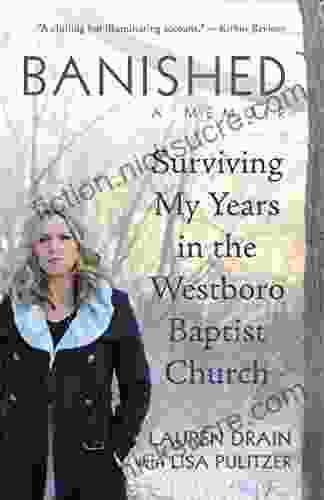
 Rick Nelson
Rick NelsonSurviving My Years in the Westboro Baptist Church: A...
In the quaint town...

 Edwin Blair
Edwin BlairBuild Your Own Semi Auto Handgun: A Comprehensive Guide...
: Empowering Aspiring...
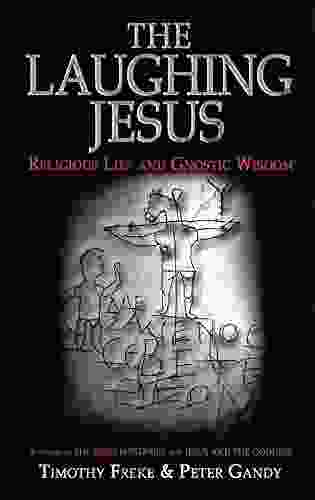
 Steve Carter
Steve CarterThe Laughing Jesus: Unmasking Religious Lies and...
The Prevailing Paradigm of Christian...

 Brett Simmons
Brett SimmonsComprehensive Fully Illustrated Reference for Modern...
Welcome to the...
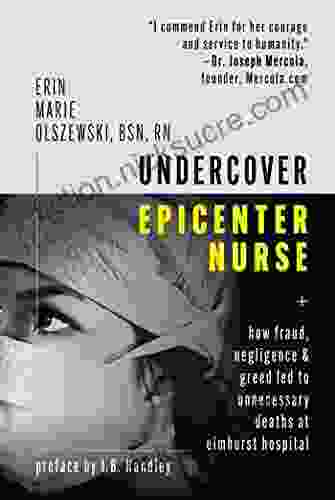
 Steven Hayes
Steven HayesFraud, Negligence, and Greed: A Scathing Exposé of the...
**** In the annals of medical malfeasance,...
4.7 out of 5
| Language | : | English |
| File size | : | 13180 KB |
| Text-to-Speech | : | Enabled |
| Screen Reader | : | Supported |
| Enhanced typesetting | : | Enabled |
| Word Wise | : | Enabled |
| Print length | : | 576 pages |
| Lending | : | Enabled |


